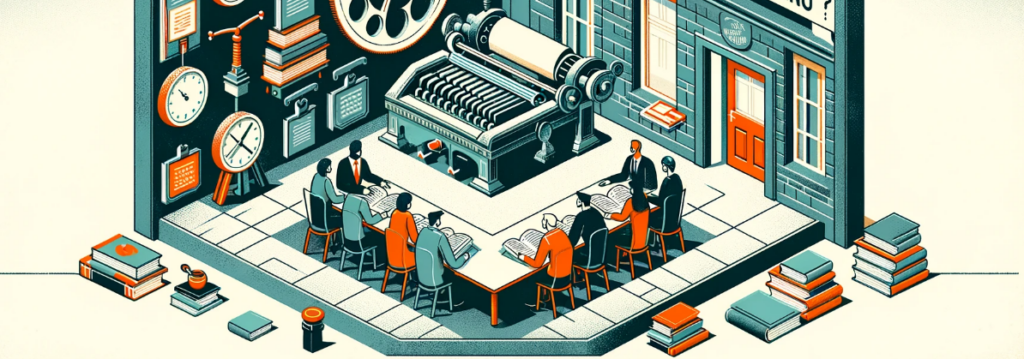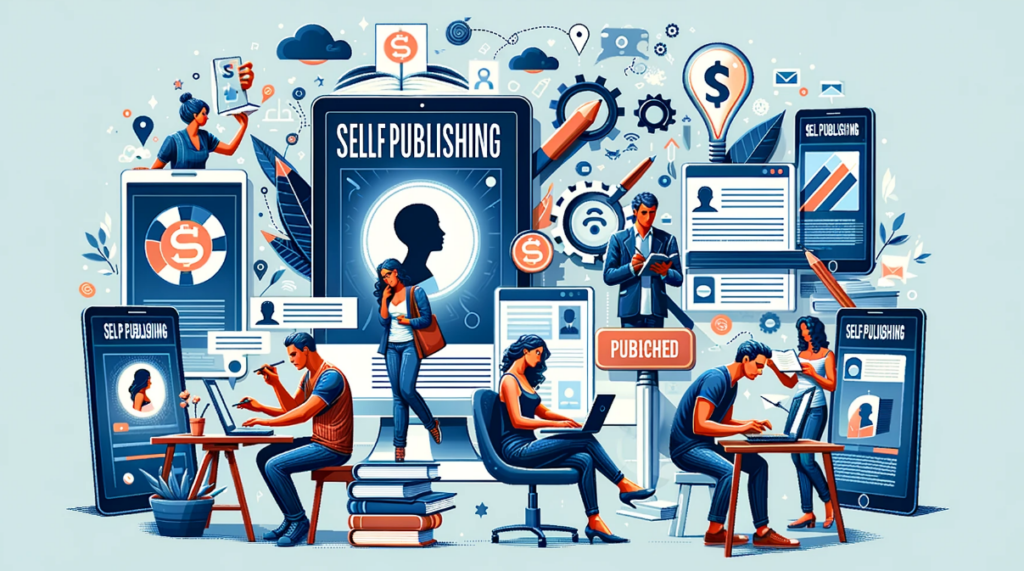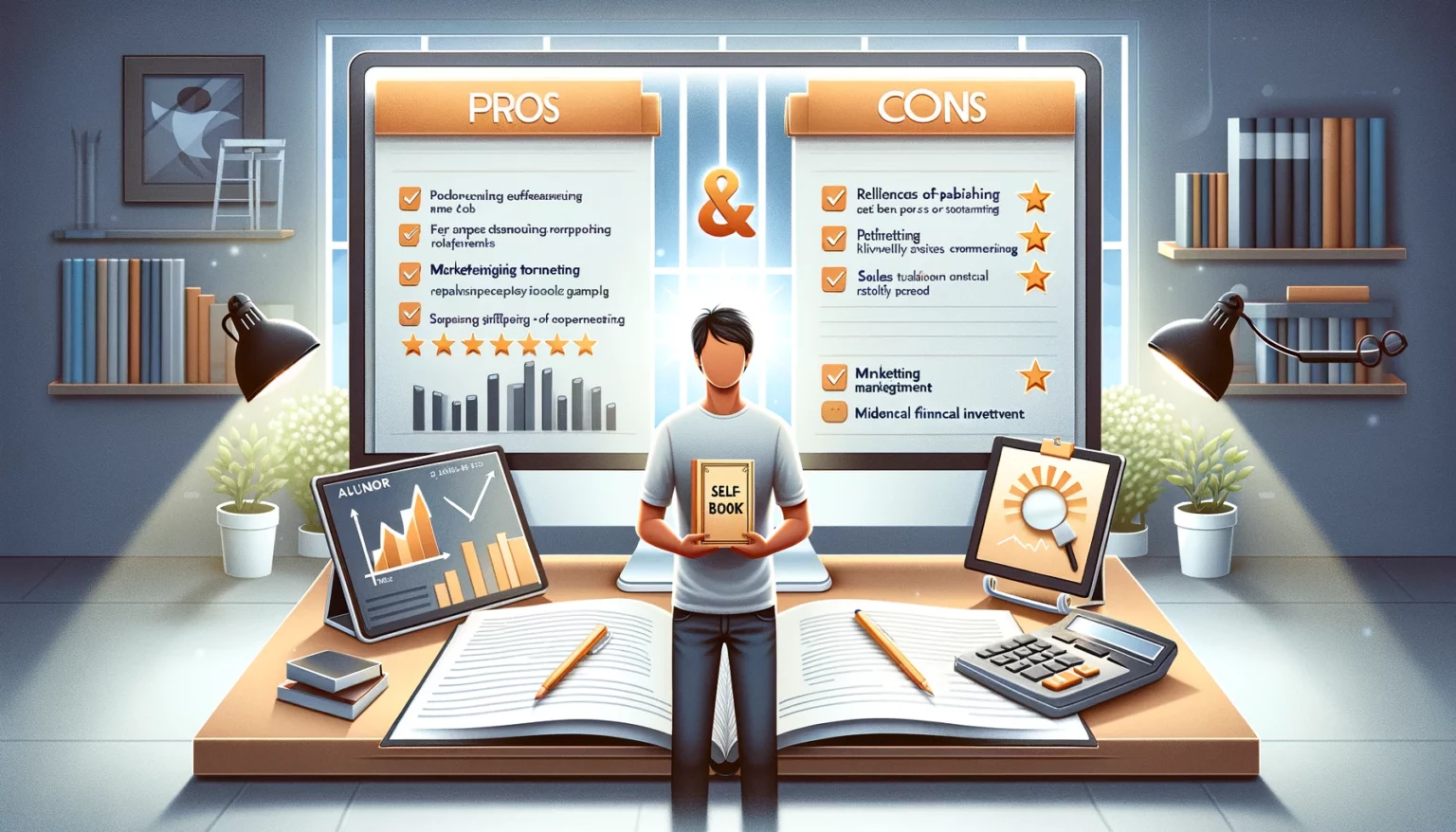The world of publishing has undergone a remarkable transformation in recent years, primarily influenced by the digital revolution. Where once the path to becoming a published author was gated by the formidable walls of traditional publishing houses, now an alternative route has emerged: self-publishing.
This democratization of publishing has unlocked unprecedented opportunities for writers, allowing them to share their stories without the need for traditional gatekeepers. However, this newfound freedom also brings unique challenges and considerations.
In this article, we delve into the intricate landscape of self publishing online versus traditional publishing, and talk about self publishing pros and cons. Our exploration is not just about listing differences but understanding the deeper implications of each path for authors.
We aim to shed light on the realities of self-publishing, offering insights from industry trends, and experiences of those who have tread these paths, ultimately providing aspiring authors with the knowledge they need to make informed decisions about their publishing journey.
Your Publishing Journey Awaits – Start NowSelf Publishing Pros and Cons
In the dynamic world of book publishing, self-publishing has emerged as a popular alternative to traditional routes, offering authors unparalleled autonomy over their work. However, this path is not without its challenges. Understanding self publishing pros and cons is crucial for any author considering this route.
Pros
There are various pros associated with self publishing. Here are the main ones:
1. Complete Creative Control: One of the most significant advantages of self-publishing is the level of creative control it offers. Authors have the final say on every aspect of their book, from the text to the cover design and the formatting.
This freedom allows for a more personal and authentic representation of their vision, something that is often compromised in traditional publishing due to market trends and editorial decisions.
2. Higher Royalties: Financially, self-publishing can be more rewarding than traditional publishing. Authors who self-publish typically receive higher royalties per book because they are bypassing the publisher, who would otherwise take a significant percentage of the sales revenue.
For example, self-published authors on platforms like Amazon’s Kindle Direct Publishing can earn up to 70% in royalties, compared to the 10-15% typically offered by traditional publishers.
3. Faster Time to Market: The timeline from manuscript to published book is considerably shorter in self-publishing. Traditional publishing can take years from acceptance to release, whereas self-published authors can have their work available to readers within months or even weeks.
This quick turnaround is particularly advantageous for topical content or genres that evolve rapidly, allowing authors to capitalize on current trends and reader interests.
Cons
There are also some cons associated with self publishing. We’ve listed the most significant below:
1. Marketing and Distribution Challenges: One of the most daunting aspects of self-publishing is the responsibility of marketing and distribution. Unlike traditional publishers, who have established networks and resources for book promotion and distribution, self-published authors often have to start from scratch. Building an audience, promoting the book, and ensuring it is available in various markets can be overwhelming and time-consuming tasks.
2. Lack of Professional Editing and Design Support: Traditional publishing houses provide authors with a team of professionals including editors, designers, and typesetters. Self-published authors, on the other hand, are responsible for these elements themselves.
While this offers more control, it also means that unless the author seeks and pays for professional help, the final product might lack the polish and finesse of traditionally published books.
3. Difficulty in Gaining Mainstream Recognition: Despite the success stories of self-published books, gaining mainstream recognition and respect can be challenging. The self-publishing industry is often perceived as being oversaturated with content, making it hard for individual books to stand out.
Additionally, self-published books are frequently excluded from major literary awards and reviews, limiting their exposure to a broader audience.

What is a traditional publishing?
Traditional publishing remains a coveted goal for many authors, symbolizing a certain level of achievement and recognition in the literary world. This route involves a more structured and collaborative approach to bringing a book to market, with distinct roles for literary agents and publishers.
What does it mean to work with a traditional publisher?
Obtaining a traditional publishing deal means you enter into the realm of the traditional publishing world. Here’s an overview of what that incorporates:
The Role of Literary Agents and Publishers
A literary agent acts as a middleman between the author and the publishing house. They are instrumental in getting a manuscript seen, negotiating contracts, and ensuring the author gets the best deal possible.
Once an agent secures a publisher for the author, the publishing house takes over. Publishers handle the logistics of bringing a book to market, including editing, design, production, marketing, and distribution. They have the resources and networks to manage these aspects professionally, which can be a significant advantage for the author.
The Standard Publishing Process
The journey from manuscript submission to book release in traditional publishing is comprehensive. After a manuscript is accepted, it undergoes several rounds of editing to refine the content.
The publisher also takes charge of the design aspects, including the cover and layout, ensuring the book is visually appealing and meets industry standards. The marketing team develops strategies to promote the book, which may include media appearances, book tours, and online marketing.
Finally, the book is distributed through established channels to bookstores and online retailers, reaching a wide audience.
Pros
1. Professional Editing, Design, and Marketing Support: Authors benefit from the expertise of experienced editors, designers, and marketers. This professional support can significantly enhance the quality and appeal of a book, increasing its chances of success.
2. Access to Wider Distribution Networks: Traditional publishers have established relationships with retailers and distributors, ensuring wider availability of the book both in physical stores and online platforms. This extensive reach is difficult for self-published authors to achieve on their own.
3. Prestige and Recognition: Being published by a traditional house often carries a certain prestige. It can open doors to literary awards, reviews in prominent publications, and other opportunities that can significantly boost an author’s career.
Cons
1. Less Creative Control: Authors may have limited say in various aspects of their book, including editorial decisions and cover design. The publisher’s priority is marketability, which can sometimes lead to creative compromises.
2. Lower Royalties: Traditionally published authors typically receive lower royalties compared to self-published authors. A significant portion of the book’s revenue goes to the publisher and agent.
3. Longer Time to Publication: The process from manuscript acceptance to book release can be lengthy, often taking years. This extended timeline can be a drawback for authors eager to see their work published.

Self Publishing Authors
Self-publishing has revolutionized the literary world, empowering authors with direct access to publishing platforms and audiences. This method of publishing allows authors to bypass traditional gatekeepers, giving them complete control over every aspect of their book. However, with this control comes responsibility and a need for strategic planning.
The Process for Self-Published Authors
Here are the different elements that are part of becoming a self-published author:
Publishing Platforms
Platforms like Amazon Kindle Direct Publishing (KDP), Smashwords, and others have made self-publishing increasingly accessible. Authors can directly upload their manuscripts to these platforms, which then convert the files into formats suitable for e-readers, print-on-demand, or both. These platforms typically offer a user-friendly interface where authors can manage their book’s details, set prices, and track sales.
Role of Self-Publishing Services
Beyond these platforms, numerous self-publishing services offer additional support. These range from professional editing and cover design to marketing and distribution services.
While these services incur costs, they can significantly enhance the quality and marketability of a book. Authors can choose which services they need, tailoring the publishing process to fit their specific requirements and budget.
Key Considerations for Self-Publishers
1. Budgeting for Self-Publishing Expenses: Unlike traditional publishing, where the publisher bears the costs, self-publishing expenses fall on the author. Budgeting for editing, cover design, formatting, marketing, and distribution is crucial.
Costs can vary widely, so authors need to research and plan their budgets carefully, ensuring they can cover essential expenses without overextending themselves.
2. Importance of Self-Marketing and Building a Reader Base: Marketing is a critical component of self-publishing success. Authors must proactively promote their books through social media, author websites, book signings, and other channels.
Building a reader base requires consistent engagement and effort, as the competition is intense. Networking with other authors and participating in writing communities can also be beneficial.
3. Balancing Quality with Self-Management: Self-published authors have to balance the creative aspect of writing with the practicalities of managing their publication. This includes ensuring the book is professionally edited, designed, and formatted.
Quality cannot be compromised, as it directly influences readers’ perceptions and the book’s overall success. Time management and prioritizing tasks become key skills in successfully navigating the self-publishing process.
Conclusion – Self Publishing Pros and Cons
The journey of publishing a book, whether through self-publishing or a traditional publisher, is a complex and nuanced process, each with its distinct advantages and challenges. Self-publishing offers authors complete creative control, higher royalties, and a faster route to market, but it also requires substantial personal effort in marketing, distribution, and quality management. On the other hand, traditional publishing provides professional editing, design, and marketing support, along with wider distribution networks and the prestige of being associated with established publishing houses. However, it often means less creative control, lower royalties, and a longer timeline to publication.
In this evolving literary landscape, the choice between self-publishing and traditional publishing is not just a matter of preference but a strategic decision based on an author’s goals, resources, and willingness to navigate the challenges of each path. For some, the allure of complete control and higher profit margins will guide them towards self-publishing. For others, the support, expertise, and prestige offered by traditional publishers will be more appealing.
Moreover, the publishing industry itself is adapting, with traditional publishers increasingly recognizing the value of self-published works and the authors behind them. This blurring of lines between the two paths offers new opportunities and challenges for authors.
Ultimately, the decision on how to publish should be made with a clear understanding of what each path entails. Aspiring authors are encouraged to thoroughly research, reflect on their long-term goals, and consider their personal strengths and limitations before choosing a route.
The most important factor remains the passion and dedication to one’s craft, as it is the quality and appeal of the written work that will ultimately determine its success, regardless of the publishing path chosen.
As we move forward, the world of publishing will undoubtedly continue to evolve, offering more options and opportunities for authors. The key to navigating this landscape is staying informed, adaptable, and always committed to the art of storytelling.
Your Publishing Journey Awaits – Start Now






